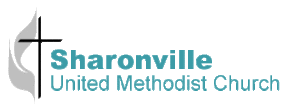
1736 -1816
The United Methodist Church shares a common history and heritage with other Methodist and Wesleyan bodies. The lives and ministries of John Wesley (1703–1791) and of his brother, Charles (1707–1788), mark the origin of their common roots. Both John and Charles were Church of England missionaries to the colony of Georgia, arriving in March 1736. It was their only occasion to visit America. Their mission was far from an unqualified success, and both returned to England disillusioned and discouraged, Charles in December 1736, and John in February 1738.
Both of the Wesley brothers had transforming religious experiences in May 1738. In the years following, the Wesleys succeeded in leading a lively renewal movement in the Church of England. As the Methodist movement grew, it became apparent that their ministry would spread to the American colonies as some Methodists made the exhausting and hazardous Atlantic voyage to the New World.
Organized Methodism in America began as a lay movement. Among its earliest leaders were Robert Strawbridge, an immigrant farmer who organized work about 1760 in Maryland and Virginia, Philip Embury and his cousin, Barbara Heck, who began work in New York in 1766, and Captain Thomas Webb, whose labors were instrumental in Methodist beginnings in Philadelphia in 1767.
The Churches Grow
1817-1843
The Second Great Awakening was the dominant religious development among Protestants in America in the first half of the nineteenth century. Through revivals and camp meetings sinners were brought to an experience of conversion. Circuit riding preachers and lay pastors knit them into a connection. This style of Christian faith and discipline was very agreeable to Methodists, United Brethren, and Evangelicals, who favored its emphasis on the experiential. The memberships of these churches increased dramatically during this period. The number of preachers serving them also multiplied significantly.
The Slavery Question and Civil War
1844-1865
John Wesley was an ardent opponent of slavery. Many of the leaders of early American Methodism shared his hatred for this form of human bondage. As the nineteenth century progressed, it became apparent that tensions were deepening in Methodism over the slavery question. In this matter, as in so many others, Methodism reflected a national ethos because it was a church with a membership that was not limited to a region, class, or race. Contention over slavery would ultimately split Methodism into separate northern and southern churches.
Reconstruction, Prosperity, and New Issues
1866-1913
The Civil War dealt an especially harsh blow to The Methodist Episcopal Church, South. Its membership fell to two-thirds its pre-war strength. Many of its churches lay in ruins or were seriously damaged. A number of its clergy had been killed or wounded in the conflict. Its educational, publishing, and missionary programs had been disrupted. Yet new vitality stirred among southern Methodists, and over the next fifty years its membership grew fourfold to more than two million.
It was during this period that Alejo Hernandez became the first ordained Hispanic preacher in Methodism, although Benigno Cardenas had preached the Methodist message in Spanish in Santa Fe, New Mexico, as early as 1853.
Mission work, both home and overseas, was high on the agendas of the churches. Home mission programs sought to Christianize the city as well as the Native American. Missionaries established schools for former slaves and their children. Missions overseas were effective in Asia, Europe, Africa, and Latin America.
The period between the Civil War and World War I also was marked by other theological developments and controversies. The holiness movement, the rise of liberal theology, and the Social Gospel movement were sources of considerable theological debate.
World War and More Change
1914-1939
In the years immediately prior to World War I, there was much sympathy in the churches for negotiation and arbitration as visible alternatives to international armed conflict. Many church members and clergy openly professed pacifism. However, when the United States officially entered the war in 1917, pacifism faded. The antecedent churches of United Methodism were not unlike other American denominations in expressing their national loyalties.
Following overwhelming approvals at the General Conferences and annual conferences of the three churches, they were united in April 1939, into The Methodist Church. At the time of its formation the new church included 7.7 million members.
Movement Toward Union
1940-1967
Although Methodists, Evangelicals, and United Brethren each had published strong statements condemning war and advocating peaceful reconciliation among the nations, the strength of their positions was largely lost with American involvement in the hostilities of World War II. Nevertheless, throughout the war many churches continued to express their disdain for violence and their support for conscientious objection.
As this period ended, negotiations between The Methodist Church and The Evangelical United Brethren Church were proceeding toward their anticipated union into The United Methodist Church.
Developments and Changes
1968
When The United Methodist Church was created in 1968, it had approximately 11 million members, making it one of the largest Protestant churches in the world.
Since its birth, United Methodism has experienced a number of changes in its life and structure. It has become increasingly aware of itself as a world church with members and conferences in Africa, Asia, Europe, and the United States. While its membership in Europe and the United States has declined noticeably since 1968, membership in Africa and Asia has grown significantly.
An increasing number of women have been admitted to the ordained ministry, appointed to the district superintendency, elected to positions of denominational leadership, and consecrated as bishops. In 1980 Marjorie Matthews was the first woman elected to the Church’s episcopacy.
The Church has endeavored to become a community in which all persons, regardless of racial or ethnic background, can participate in every level of its connectional life and ministry.
